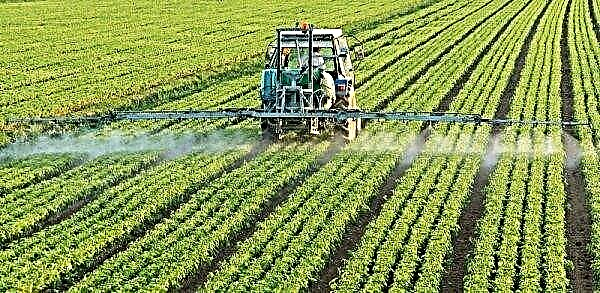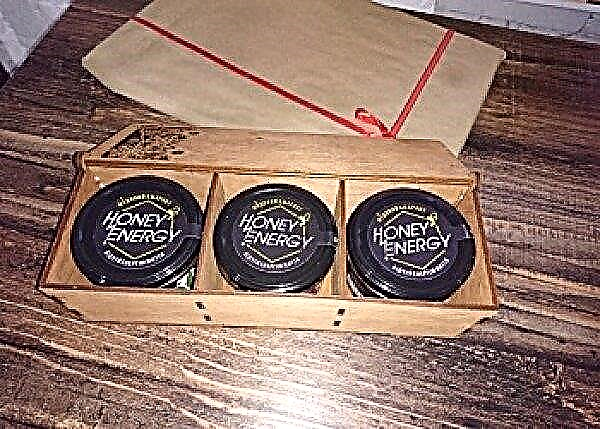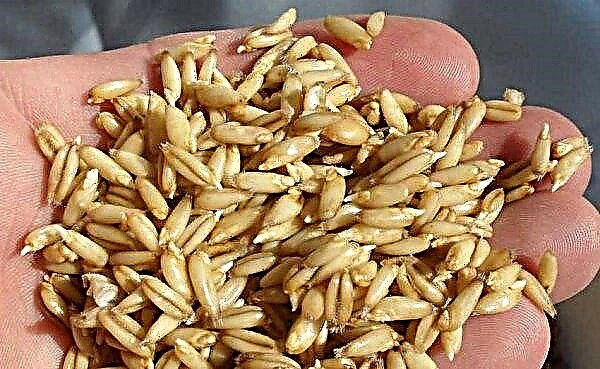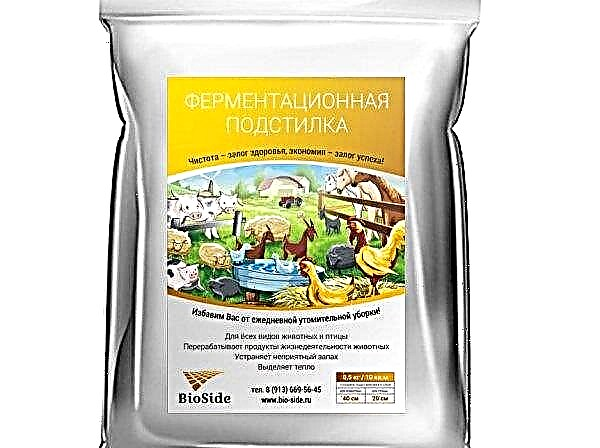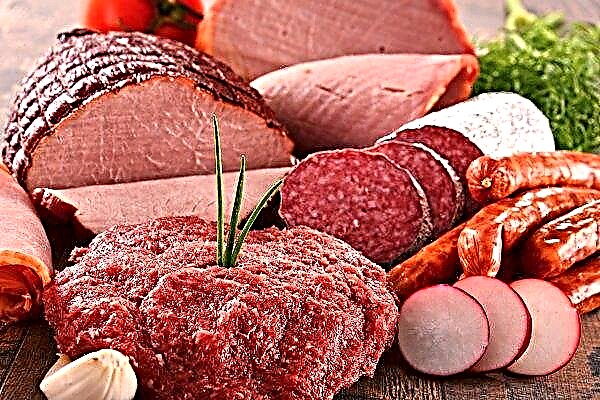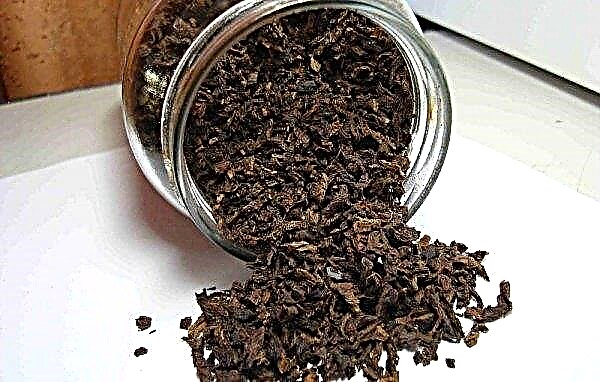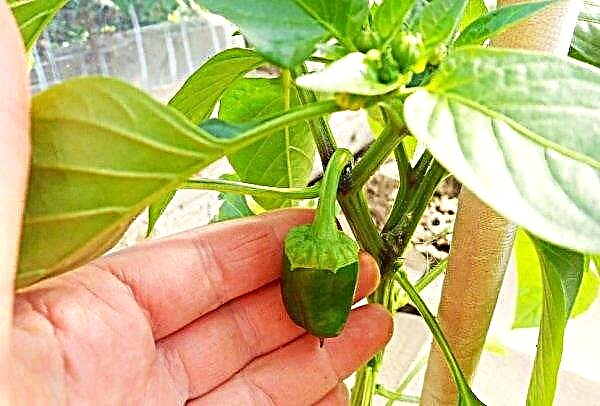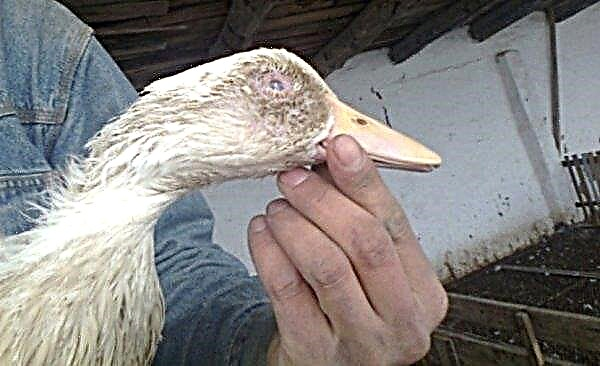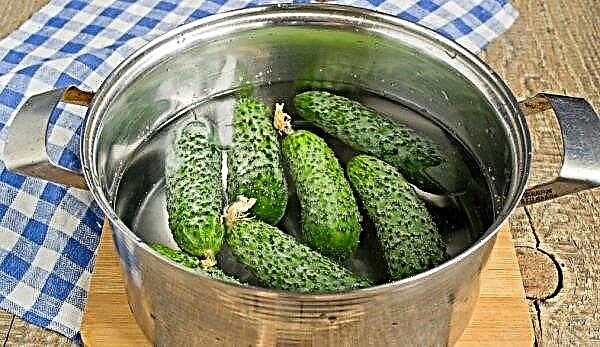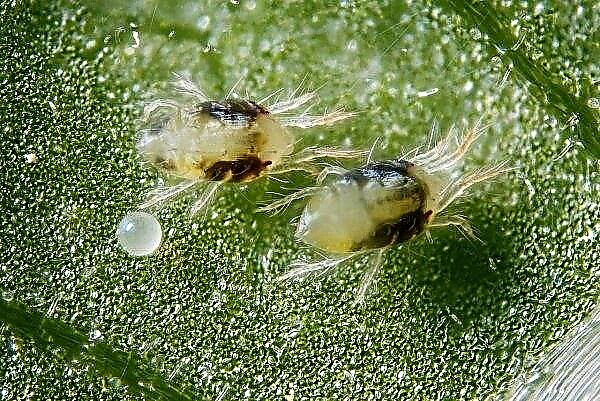An excellent potato crop can be obtained only with the right choice of seed material and the preparation of tubers for planting, which consists of sorting, calibration, germination, dressing and stimulation with micronutrients. If you are a beginner vegetable grower and choose material for planting, then the best solution would be to purchase potato varieties that are suitable for local climatic and soil conditions.
Terms for preparing potatoes for planting
The potato crop is affected not only by the quality of the seeds, but also by the general conditions for their storage and sowing. Common disadvantages include premature germination of potatoes.
Before planting, a preliminary selection of tubers is necessary. Experienced gardeners recommend excluding all potatoes that have an ugly shape or are affected by diseases.Did you know? According to statistics, as of January 1, 2017, up to 95 million tons of this vegetable were grown in China, up to 45 million tons in India, up to 30 million tons in Russia, 22 million tons in Ukraine, 20 million tons in the USA, in Germany - 10 million tons
One month before planting, the tubers should be removed from the storehouse and sprouted by any known method until sprouts appear. The temperature regime in the room should be within +12 ... + 15ºС. If it is not possible to maintain the indicated temperature, then it is better to raise the potatoes “for heating” in 15–20 days, which will allow to achieve good shoot growth.
If you don’t have any time left to sprout potatoes, you can do this in 3-5 days. At the same time, high humidity and temperature conditions within +20 ... + 30ºС are required in the room.

Tubers selection
Experienced growers select tubers during harvesting or in early spring. To do this, the root system must contain a large number of tubers, and the bush itself must be healthy.
When preparing potatoes, it must be remembered that tubers of different size and quality can produce rare seedlings and different productivity of bushes. After the initial selection of root crops, it is necessary to calibrate them into fractions.
In the first fraction, it is desirable to place tubers of large sizes weighing more than 80 g. The second fraction is formed from medium-sized plants and weighing from 50 to 80 g. As a result, planting material weighing 30-50 g will remain.
Small potatoes can be used only when they are harvested from fruitful and healthy bushes. To spill the eyes immediately after sorting and calibration, the tubers should be placed for 1–1.5 months for warming and germination.Important! The tubers selected in shape should not be disturbed, as the tops will grow unevenly. Planting unsorted tubers complicates further plant care, as seedlings begin to appear unevenly.
Landscaping
Exceptionally sprouted tubers are suitable for planting; in this regard, they should be landscaped. Due to the content of solanine poison in them, they are less susceptible to diseases and attack of various insects. The room should be well lit, as they begin to turn green only under the influence of sunlight.
It is necessary to prepare potatoes and lay in one layer so that the sun's rays fall directly on them. For uniform landscaping, they should be turned over from time to time and maintain the necessary temperature regime (+ 10 ... + 12ºС). They will turn green in 25-30 days. Landscaping, some experts call vernalization. Depending on the preferences of the farmers, other methods of preparing tubers for planting can be applied.

Germination
In the process of preparing the tubers for planting, it is required to carry out the main stage, from which the whole crop is hung. It's about germination. Germination leads to early ripening of tubers, and also allows you to reject damaged and diseased. The most effective is keeping the plant under the influence of light.
Germination can be done in 3 ways, each of which will provide a solid planting material. From this material, plants that are resistant to disease and summer heat are obtained.Important! On the eve of the germination of the tubers, it is imperative to disinfect. A less expensive method is the treatment with boric acid.
Dry
This method provides rapid plant growth and the formation of the first roots. During dry germination, it is advisable to put the vegetable in low boxes with side openings in 1-2 layers. If this is not possible, then you can use plastic bags with small ventilation holes of 1.5 cm at a distance of 10-15 cm.
The package should be laid up to 12 fruits. The temperature regime for dry germination should be before awakening the eyes +18 ... + 20ºС, and after - from +10 to + 15ºС. The whole process takes from 20 to 40 days. After the formation of sprouts 10-15 mm long, the vegetable should be planted in warm soil.

Wet
Wet germination of tubers is an accelerated method of preparing potatoes for planting. Seed tubers should be sprouted in boxes with wet peat or humus. Place the container with tubers in a dark and warm room, setting the temperature in the room at +12 ... + 15ºС.
Thanks to this method, not only sprouts, but also the root system are formed in the vegetable. Prior to planting, it is advisable to sort it out again to discard sprouted or rotted potatoes.Did you know? According to statistics from 2017, one resident of Belarus eats up to 181 kg of potatoes annually, Kyrgyzstan - 143 kg, Ukraine - 136 kg, Poland - 131 kg, Lithuania - 116 kg, Latvia - 114 kg.
Seeds must be put in containers in layers, pouring them with moist material. To do this, use one that is capable of passing air. After about 3 weeks, it will be possible to observe small shoots up to 4 cm long. Such material can give strong and early seedlings.
Combined
Sometimes you should use a combined method of germinating potatoes, which has some advantages. First, the tubers are laid in the light, and then transferred to a wet substrate for further germination.
The substrate is recommended to moisten with potash or phosphorus fertilizers. The first 20 days, the vegetable must be germinated in a warm and bright room. After solanine is formed in the tubers, they will need to be kept in moisture for 1–1.5 weeks. At the end of the procedure, they must immediately be planted in warmed up soil to obtain a good harvest.
Drying, warming and vernalization
The methods of emergency awakening of seed tubers include withering and warming.
Tuberization is resorted to in cases where:
- There are no conditions for full germination.
- After wintering, potato tubers did not get out of their “sleep” state.
Preparing a vegetable by heating is one of the quickest ways to sprout. This method must be resorted to if the tubers, under the influence of uncertain reasons, have not grown, and there is no time to use other methods. Warming up is carried out for 2-3 days at a temperature of +35 to + 40ºС.
Spring vernalization is the process of formation of strong sprouts in potatoes.
Bookmarking takes place in the same way as when drying, but the main temperature conditions must be observed:
- Sprout phase - temperature conditions within + 12 ... + 15ºС.
- Hardening phase - the temperature is reduced by 2 days to + 6 ... + 8ºС.
- Active growth phase - temperature conditions within + 15 ... + 20ºС.
Did you know? In Russia, the Ministry of Health approved an annual potato consumption rate of 90 kg per person. However, not so long ago, residents exceeded this figure, and it increased to 112.6 kg.
Assistive Techniques
During the preparation of potatoes for planting, it is advisable to apply methods to protect it from diseases and pests. A month before planting, seed material should be prepared.
To control pests, it is advisable to treat them with fungicides on the eve of planting. There is another way that leads to an increase in productivity - dusting with wood ash. Ash contains all the necessary trace elements that contribute to the improvement of metabolic processes in the potato bush.
Soak
During mechanical sorting, it is difficult to see all the infected tubers, so planting material is recommended to be soaked in saline before planting. Also, if the potatoes are soaked in a 22% urea solution, then the damaged tubers will remain floating, and healthy ones will fall to the bottom.
To increase the yield, it is advisable to soak the potatoes in a solution of nitrogen-phosphorus fertilizers. For this, 4 kg of superphosphate and ammonium nitrate must be mixed in 100 l of water. 2-3 hours before planting, seed potatoes must be lowered into the prepared solution for 1 hour.
Treatment with dressings and nutrient solutions
The tuber peel may contain pathogenic flora, so it must be etched before planting. To prevent plant diseases during the growing season, fungicides should be used, which form a protective layer on the peel. For etching, you can use drugs such as "Matador" and "Contador" (from pests), "Masterpiece" and "Prestige" (from diseases and pests). Together with etching, it is necessary to treat them with a growth stimulator - El-1.

Cutting
If there is a shortage of seed material on a household plot, one of two types of potatoes needs to be sliced: ring slicing or dividing into shares. Before starting cutting tubers should be brought out of the state of "sleep" by heating. It is recommended that beginning growers divide tubers 3-4 days before planting or 4-5 hours before planting in the ground.
Many gardeners argue that slicing potatoes can minimize its resistance to disease, and not all varieties can tolerate slicing.Important! Large tubers are preferably cut into 4 parts, but there is a danger that under adverse conditions they will be weak or not germinate at all. If the day the potatoes are planted outside is cool or rainy, cutting is not recommended.
Cut into shares
Specialists recommend cutting into shares in order to save planting material, as well as when using a new variety. Size affects the number of shares into which planting material needs to be cut. Potatoes are usually cut into two, three or four lobes.
When dividing tubers, it is necessary to adhere to the basic rules, namely:
- It is necessary to cut only germinated.
- For the formation of a protective crust, the material must be kept for 3 days with a slice up.
- They should be exposed to a sufficient amount of sunlight.
- Each potato wedge should weigh at least 25 g and have at least 2 sprouts.
- The incision must be made with a stainless steel knife, disinfecting it every time in a 0.1% solution of potassium permanganate (potassium permanganate).

Annular incision
This method is used to stimulate the number of buds on a plant, namely, it ensures the supply of nutrients to the lateral and lower buds, which, in turn, will lead to an increase in the number of main stems. An incision along the ring should be performed before awakening of the eyes, approximately 1–1.5 months before planting. It should be done with the sharp end of the knife to a depth of 1 cm across the tuber. Such tubers are planted in the ground without breaking, whole.
Compliance with the technology of preparing potatoes for planting and further targeted care will contribute to a healthy harvest. Planting an unprepared vegetable increases the risk of contracting disease.


